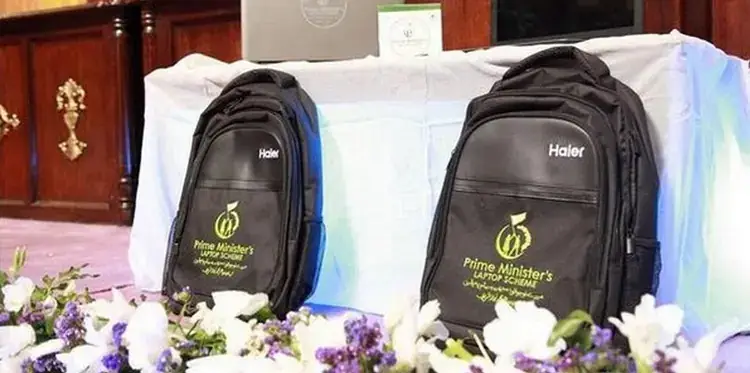

In the realm of modern education and technological advancement, initiatives aimed at bridging the digital divide are crucial for fostering inclusive growth and development. One such initiative that has garnered significant attention and debate in Pakistan is the Prime Minister Laptop Scheme introduced by the Pakistan Muslim League (Nawaz) - PMLN. Designed to empower students and enhance their educational experience through the integration of technology, this scheme has sparked both praise and criticism across the country.
Understanding the Prime Minister Laptop Scheme
The Prime Minister Laptop Scheme, often referred to as the PMLN Laptop Scheme, was launched with the vision to equip students with essential tools for learning in the digital age. Rolled out under the tenure of the PMLN government, led by Nawaz Sharif, the initiative aimed to distribute laptops to eligible students across Pakistan. Its primary objectives were to:
-
Bridge the Digital Divide: Provide access to digital resources and tools to students who may not otherwise have such opportunities.
-
Enhance Educational Experience: Integrate technology into education to facilitate learning, research, and collaboration among students and educators.
-
Empower Youth: Equip young minds with the skills and resources necessary to compete in a globalized, technology-driven economy.
Implementation and Rollout
The implementation of the scheme involved a structured process to ensure transparency and fairness in distribution. Eligibility criteria typically included enrollment in recognized educational institutions, maintaining a certain academic performance threshold, and sometimes financial need assessments. The laptops provided were equipped with educational software and internet connectivity, aiming to enrich the learning experience beyond traditional classroom boundaries.
Steps to Get a Laptop Under the Scheme
For students interested in obtaining a laptop under the PMLN Prime Minister Laptop Scheme, the process involves several key steps:
-
Eligibility Check: Ensure you meet the eligibility criteria. Generally, this includes being enrolled in a recognized educational institution, maintaining a specific academic performance level, and sometimes proving financial need.
-
Online Registration: Visit the official website dedicated to the Prime Minister Laptop Scheme. Complete the online registration form with accurate details. You will need to provide personal information, educational background, and contact details.
-
Submission of Documents: After registering online, you may be required to submit certain documents to verify your eligibility. These typically include your academic transcripts, proof of enrollment, and possibly a copy of your CNIC (Computerized National Identity Card).
-
Verification Process: Once your documents are submitted, they will go through a verification process. This step ensures that all information provided is accurate and that you meet the criteria set by the scheme.
-
Notification of Selection: If you are selected to receive a laptop, you will be notified through the contact details provided during registration. This notification will include information on how and when to collect your laptop.
-
Laptop Distribution: Selected students will be invited to attend a distribution ceremony or event where the laptops will be handed out. It is essential to bring any required identification documents to this event to confirm your identity.
-
Training and Support: After receiving the laptop, students might have access to training sessions or resources to help them get the most out of their new device. This could include tutorials on using the installed educational software and internet connectivity options.
Impact on Education and Society
Educational Advancements
The distribution of laptops under the PMLN scheme undoubtedly brought about several positive changes in the educational landscape of Pakistan. Students gained access to a wealth of educational resources, online libraries, and tools that facilitated research and enhanced their academic performance. This access not only leveled the playing field but also empowered students from various socio-economic backgrounds to explore and innovate.
Socio-Economic Implications
Beyond the classroom, the scheme had broader socio-economic implications. By nurturing digital literacy and skills among the youth, it aimed to reduce unemployment rates and prepare a skilled workforce capable of contributing meaningfully to Pakistan's economic growth. Moreover, the scheme aimed to empower women and marginalized communities by providing them with equal access to educational resources and opportunities.
Criticisms and Controversies
Despite its noble intentions, the PMLN Prime Minister Laptop Scheme faced its share of criticisms and controversies. Some critics argued that the scheme focused more on distributing hardware rather than ensuring sustainable technology integration in education. Issues such as inadequate maintenance of distributed laptops, connectivity challenges in remote areas, and the sustainability of providing ongoing support and updates for the devices were raised.
Evaluating Success and Sustainability
The success of any governmental initiative lies not only in its initial rollout but also in its long-term sustainability and impact. Evaluating the effectiveness of the PMLN Laptop Scheme requires a comprehensive assessment of its outcomes in terms of educational attainment, digital literacy rates, and economic empowerment over time. Furthermore, understanding the challenges faced during implementation can provide valuable insights for future policy-making in similar domains.
Future Directions and Recommendations
As Pakistan continues to navigate the complexities of technological integration in education, there are valuable lessons to be learned from the PMLN Prime Minister Laptop Scheme. Moving forward, policymakers should prioritize:
- Comprehensive Planning: Ensuring that initiatives are backed by robust planning and sustainable funding models.
- Infrastructure Development: Investing in digital infrastructure to support widespread connectivity, especially in underserved and remote areas.
- Capacity Building: Providing continuous training and support to educators and students to maximize the benefits of technology in education.
- Public-Private Partnerships: Collaborating with the private sector to leverage resources and expertise in implementing large-scale educational initiatives.
Conclusion
In conclusion, the PMLN Prime Minister Laptop Scheme stands as a testament to the transformative power of technology in education. While it faced its share of challenges and criticisms, its overarching goal of empowering students and bridging the digital divide remains commendable. As Pakistan progresses on its journey towards a knowledge-based economy, initiatives like these play a pivotal role in shaping the future of its youth and society at large. By learning from both successes and shortcomings, Pakistan can chart a course towards more inclusive and sustainable educational policies that harness the full potential of its digital generation.
In essence, the PMLN Prime Minister Laptop Scheme exemplifies a visionary approach towards empowering minds and ensuring that every student has the opportunity to thrive in the digital era. By following the outlined steps to get a laptop, eligible students can take advantage of this opportunity to enhance their educational journey and prepare for a technologically driven future.









